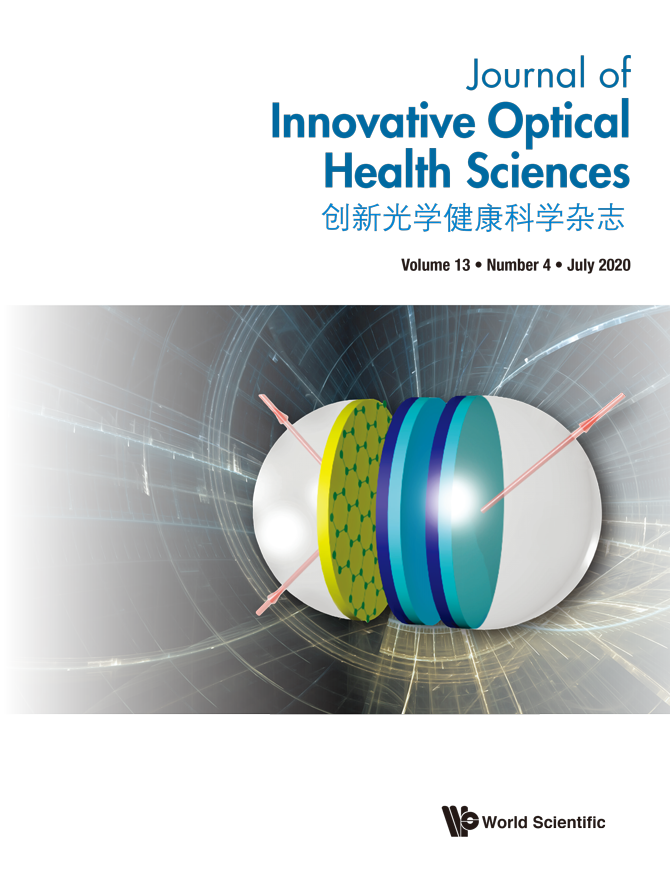Automated classification of dual channel dental imaging of auto-fluorescence and white lightby convolutional neural networks
[1] P. Amrollahi, B. Shah, A. Seifi et al., "Recent advancements in regenerative dentistry: A review," Mater. Sci. Eng. C 69, 1383–1390 (2016).
[2] P. S. Stein, M. Desrosiers, S. J. Donegan et al., "Tooth loss, dementia and neurithology in the nun study," J. Am. Dent. Assoc. 138(10), 1314–1322 (2007).
[3] R. G. Watt, G. Tsakos, C. D. Oliveira et al., "Tooth loss and cardiovascular disease mortality risk - Results from the Scottish Health Survey," PLos One 7(2), E30797 (2012).
[4] K. Ekstrand, T. Gimenez, F. Ferreira et al., "The international caries detection and assessment system - ICDAS: A systematic review," Caries Res. 52(5), 406–419 (2018).
[5] A. Jablonski-Momeni, V. Stachniss, D. N. Ricketts et al., "Reproducibility and accuracy of the ICDASII for detection of occlusal caries in vitro," Caries Res. 42(2), 79–87 (2008).
[6] A. I. Ismail, M. Tellez, N. B. Pitts et al., "Caries management pathways preserve dental tissues and promote oral health," Community Dent. Oral Epidemiol. 41(1), e12–e40 (2013).
[7] Z. Bahrololoomi, F. Ezoddini, N. Halvani, "Comparison of radiography, laser fluorescence and visual examination for diagnosing incipient occlusal caries of permanent first molars," J. Dent. (Tehran) 12(5), 324–332 (2015).
[8] E. H. Verdonschot, B. Angmarmansson, J. J. T. Bosch et al., "Developments in caries diagnosis and their relationship to treatment decisions and quality of care," Caries Res. 33(1), 32–40 (1999).
[9] K. R. Ekstrand, D. N. Ricketts, E. A. Kidd, "Reproducibility and accuracy of three methods for assessment of demineralization depth on the occlusal surface: An in vitro examination," Caries Res. 31(3), 224–231 (1997).
[10] R. Mepparambath, S. S. Bhat, S. K. Hegde et al., "Comparison of proximal caries detection in primary teeth between laser fluorescence and bitewing radiography: An in vivo study," Int. J. Clin. Pediatr. Dent. 7(3), 163 (2014).
[11] P. D. Marsh "Dental plaque as a microbial biofilm," Caries Res. 38(3), 204–211 (2004).
[12] R. Z. Thomas, H. C. V. D. Mei, M. H. V. D. Veen et al., "Bacterial composition and red fluorescence of plaque in relation to primary and secondary caries next to composite: An in situ study," Mol. Oral Microbiol. 23(1), 7–13 (2010).
[13] Y. Shigetani, S. Takenaka, A. Okamoto et al., "Impact of streptococcus mutans on the generation of fluorescence from artificially induced enamel and dentin carious lesions in vitro," Odontology 96(1), 21–25 (2008).
[14] W. Buchalla, "Comparative fluorescence spectroscopy shows differences in noncavitated enamel lesions," Caries Res. 39(2), 150–156 (2005).
[15] C. C. Ko, D. H. Yi, D. J. Lee et al., "Diagnosis and staging of caries using spectral factors derived from the blue laser-induced autofluorescence spectrum," J. Dent. 67, 77–83 (2017).
[16] D. M. Zezell, A. C. Ribeiro, L. Bachmann et al., "Characterization of natural carious lesions by fluorescence spectroscopy at 405-nm excitation wavelength," J. Biomed. Opt. 12(6), 064013 (2007).
[17] M. M. Braga, F. M. Mendes, K. R. Ekstrand, "Detection activity assessment and diagnosis of dental caries lesions," Dent. Clin. North Am. 54(3), 479–493 (2010).
[18] S. Ai-Khateeb, C. M. Forsberg, E. de Josselin de Jong et al., "A longitudinal laser fluorescence study of white spot lesions in orthodontic patients," 113(6), 595–602 (1998).
[19] L. Jae-Hong, K. Do-Hyung, J. Seong-Nyum et al., "Detection and diagnosis of dental caries using a deep learning-based convolutional neural network algorithm," J. Dent. 77, 106–111 (2018).
[20] U. Boye, I. A. Pretty, M. Tickle et al., "Comparison of caries detection methods using varying numbers of intra-oral digital photographs with visual examination for epidemiology in children," BMC Oral Health 13(1), 6–13 (2013).
[21] C. Wang, H. Qin, M. YangII, Q. Cai, Smart dental detector, Proc. SPIE 10820, Optics in Health Care and Biomedical Optics VIII, 108200T, 24 October 2018, pp. 1–8.
[22] R. K. Srivastava, K. Greff, J. Schmidhuber, "Training very deep networks," Comput. Sci. (2015).
[23] F. Chollet, Keras, Available: https://github.com/fchollet/keras (2018).
[24] R. K. Srivastava, K. Greff, J. Schmidhuber, "Training very deep networks," Comput. Sci., arXiv:1512.07108v6 [cs.CV] (2017).
[25] N. Srivastava, G. Hinton, A. Krizhevsky et al., "Dropout: A simple way to prevent neural networks from overfitting," J. Mach. Learn. Res. 15(1), 1929–1958 (2014).
[26] L. Bottou, Large-scale machine learning with stochastic gradient descent, COMPSTAT 2010, 177–186 (2010).
[27] M. E. Nilsback, A. Zisserman, Automated flower classification over a large number of classes, 2008 Sixth Indian Conf. on Computer Vision, Graphics & Image Processing (IEEE, 2009), pp. 722–729.
[28] A. Howard, M. Sandler, G. Chu et al., Searching for MobileNetV3. 2019. arxiv: 1905.02244.
[29] A. Kockanat, M. Unal, "In vivo and in vitro comparison of ICDAS II, DIAGNOdent pen, CarieScan PRO and SoproLife camera for occlusal caries detection in primary molar teeth," Eur. J. Paediatr. Dent. 18(2), 99–104 (2017).
Cheng Wang, Haotian Qin, Guangyun Lai, Gang Zheng, Huazhong Xiang, Jun Wang, Dawei Zhang. Automated classification of dual channel dental imaging of auto-fluorescence and white lightby convolutional neural networks[J]. Journal of Innovative Optical Health Sciences, 2020, 13(4): 2050014.



